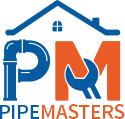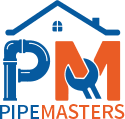What Is A Backflow Preventer & Why You Might Need One?
Backflow prevention systems are available as a means of protecting your clean water supply from contaminated water that could leak back into the system.
This contaminated water is what is referred to as the "backflow," which can come from one of two processes: backpressure or backsiphonage. The former is a result of an imbalance in water pressure, in which the downstream pressure is greater than the upstream pressure. This means the plumbing for your home has water inside of it at greater pressures than what you're getting from the water main, which isn't normally the case, and will result in wastewater from your system being pushed into the municipal water supply. The latter is a result of negative pressure and a sort of vacuum effect, in which contaminated water begins to flow in the wrong direction. It is usually a result of a water main break or a situation in which a fire hydrant is being used in the neighborhood.
Not every plumbing system will require the use of a backflow preventer, so how do you know if you need one for yours? Here are some considerations to keep in mind.When to install a backflow prevention system
Backflow prevention assemblies are generally used in commercial settings, but there are some circumstances in which homeowners may need to implement backflow prevention systems in their homes.
This is most likely to be the case if you have a sprinkler system installed somewhere on your property. If that sprinkler system cross-connects with the drinking water supply, there is the potential for backflow from the system to result in water supply contamination.The most common scenario for contamination with a sprinkler system is a sudden drop in water pressure in the water mains in the area causing backflow. If a water main breaks or a fire hydrant nearby is used, there's the possibility that contaminants like fertilizers or pesticides used on your lawn and landscaping could flow back into the system through the sprinkler heads due to the sudden changes in pressure. This would send those contaminants into your potable water that could be used in your home.
Even still, if you have a sprinkler system but it is connected to its own irrigation water rather than being cross connected to the same water supply as your drinking water, then you won't need a backflow prevention system. So it's important for you to understand the system you have and how it's connected so you can determine if a backflow prevention system is necessary.Anyone from our team would be happy to discuss options or share information about installing and repairing backflow preventers, they can be reached at: info@pipemasters.ca or (289) 404-9063.
Pipemasters is part of Oakridge Plumbing Ontario Ltd. All Rights Reserved.| Tags:Plumbing News |



